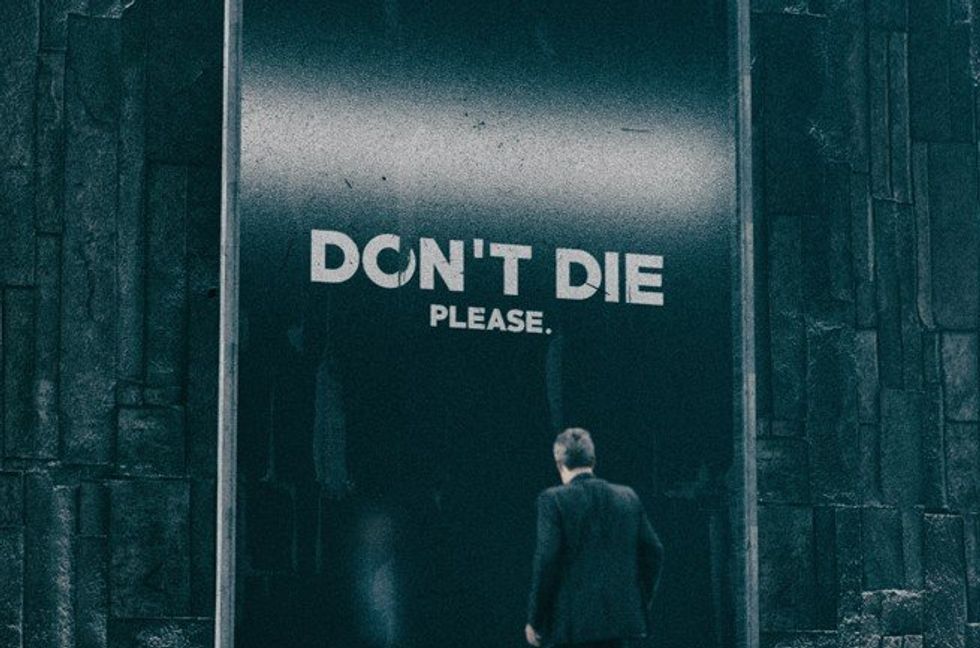CULTURE
“Suicide Contagion” in K-Pop Highlights Korean Culture’s Destructive Flaws
06 Dec, 19

James Jean Illustration
The 18th-century writer Johann Wolfgang von Goethe wrote, “Live dangerously, and you live right.”
He also wrote The Sorrows of Young Werther, a novel about a man who commits suicide after being rejected by the woman he loves. Afterward, the public began noticing what was dubbed the “Werther fever“: young men began emulating the character, creating a spike in suicide rates. Nowadays, we still observe the “Werther Effect,” also known as suicide contagion. When a prominent figure in a community, such as a high-profile celebrity, dies by their own hand, sometimes it sets off a bizarre “cluster” of suicides. While the causes of suicide are complexly layered and diverse–though commonly attributed to mental illness, trauma, and societal pressures–the modern age of social media (dis)connection, celebrity, and Internet trolls means that mental health experts are noting concerning correlations between celebrity suicides and increased suicide rates, particularly within the insular, high-pressure world of K-pop.
“Suicide contagion is real, which is why I’m concerned about it,” said Madelyn Gould, a professor of Psychiatry at Columbia University. The phenomenon accounts for people reacting to news of suicide with suicidal behaviors or persuading others to attempt suicide. The recent deaths of Korean celebrities Sulli, 25, and Goo Hara, 28, as well as actor Cha In-ha, 27, could count as a “suicide cluster.” (To be clear, the exact cause of Cha’s unexpected death has yet to be released, but “suicide is strongly suspected”). Before them were Kim Jong-hyun, 27, Lee Eun Joo, 24, and Lee Hye Ryeon, 25, and other actresses and pop stars. When multiple suicides occur within the same three-month period in the same location, it’s considered a cluster. At this point, it’s well-known that the intensive, competitive world of K-pop (and the entertainment industry, at large) has damaging effects on mental health, self-image, and personal relationships. Young children are recruited for their talent and subjected to arduous training, pushed to meet unrealistic (and unhealthy) expectations and rigid schedules, in addition to being subject to callous public scrutiny online.
Added to that is the conservative culture of Korea, where suicide rates continue to rank among the highest of all developed nations. Strong stigma and taboo against mental illness persist in Korea. “The blame lies with South Korean society in general,” said Ryu Sang-ho, a neurologist at Haedong hospital in Busan. “Many people with mental health issues are reluctant to take medication for fear of being seen as weak-minded. Mental health problems should be treated in the same way as a common cold. South Korean society needs to catch up.”
Additionally, strong patriarchal values still set back Korea’s gender equality. In 2018, South Korea was found to have “one of the thickest glass ceilings in the world” in regards to gender discrimination. Korea ranked 30th out of 36 nations evaluated by the Organization of Economic Co-operation and Development (OECD), and the World Economic Forum ranked Korea 115th out of 149, illuminating its gender gap in terms of wage equality and earned income. Ryu added, “South Korean society is holding on to the idea that men must be respected and women are not deserving of respect, or at least not much. The media feed off that, so it’s no surprise that the public don’t have any sense of empathy towards these women.”
 Photo by Adam Jicha-Unsplash
Photo by Adam Jicha-Unsplash
So K-pop idols are caught in a terrible nexus of patriarchy, capitalism, regressive stigmas, and the dehumanizing disconnection of media, as K-pop’s global takeover is largely attributed to streaming culture and the international reach of YouTube. But with such immense online popularity comes publicity problems. Christine Moutier, the chief medical officer at the American Foundation for Suicide Prevention, points out that news of an idol’s suicide can particularly influence the public because “it’s different from any other cause of death. When someone dies of cancer or heart disease or AIDS, you don’t have to worry about messaging it wrong.”
Indeed, The New York Times notes in “The Science Behind Suicide Contagion” that “publicity surrounding a suicide has been repeatedly and definitively linked to a subsequent increase in suicide, especially among young people. Analysis suggests that at least 5 percent of youth suicides are influenced by contagion.” One study looked at the public’s suicide rates following 98 celebrity suicides and noted a slight but consistent increase in the immediate months afterwards. In particular, the American Foundation for Suicide Prevention found that suicide contagion may increase due to: media coverage involving graphic details or images of grieving loved ones, repetitive reporting of the suicide, explicit description of the method of suicide, and dramatized–or even romanticized–accounts of the death as a form of escape from societal pressures or personal struggles.
Unless we as a global society can fix the plagues of online trolls, tabloid exploitation, and the money-grubbing capitalist machines known as record labels, our only recourse is to change the narrative surrounding suicide. Researchers urge the public and the press to focus on prevention resources and mental health services, such as The National Suicide Prevention Lifeline, 1-800-273-TALK (8255), the free, 24-hour service providing support, information, and access to other resources to people experiencing suicidal ideation or anyone who thinks they know someone experiencing suicidal thoughts. While we’re grappling with the Werther Effect worse than ever before, we should also remember that Goethe wrote, “Correction does much, but encouragement does more.” We need to–and we can–shed the pitfalls of Korean culture, with its glittery, high-tech veneer of perfection, with self-destructive habits at its core.
- The Hypocrisy of Koreaboo and Gossip “Journalism” – Popdust ›
- K-Pop Star Ahn Sojin Dead From Apparent Suicide At Age 22 … ›
- K-Pop Star’s Suicide Shows Misogyny in Korea’s Rape Cases … ›
- This Content Is Dangerous: Trauma in the Age of YouTube – Popdust ›
- Why are K-pop stars committing suicide? – YouTube ›
- K-pop stars who tragically died before 30 ›
- 9 celebrity suicides over the years that highlight immense pressures … ›
- K-Pop’s Dark Side: Assault, Prostitution, Suicide, and Spycams … ›
- Suicides by K-Pop Stars Prompt Soul-Searching in South Korea … ›
- Suicide of SHINee’s Jonghyun prompts Korea to confront grueling … ›
- K-pop singer Sulli found dead in suspected suicide, highlighting … ›













